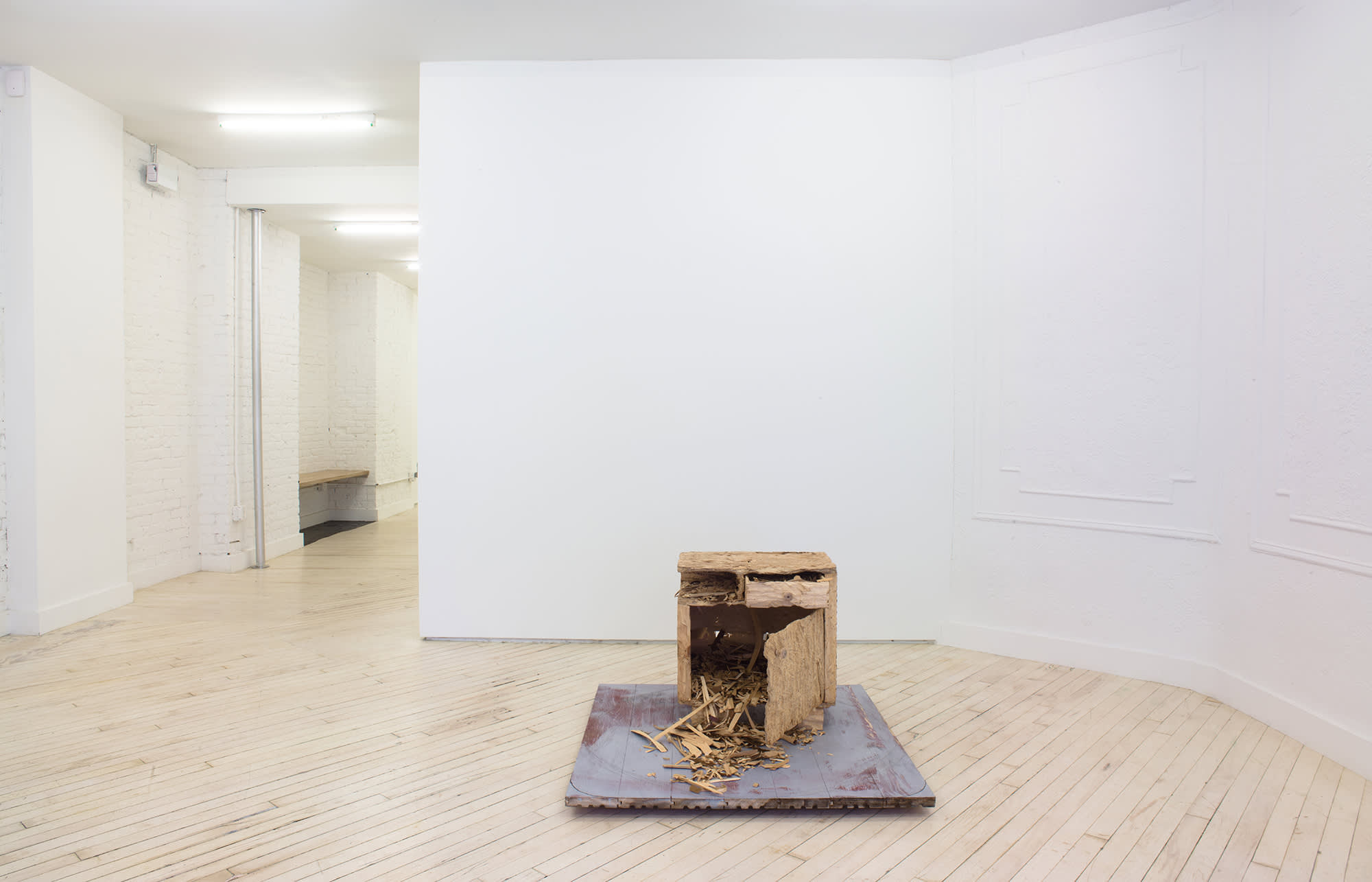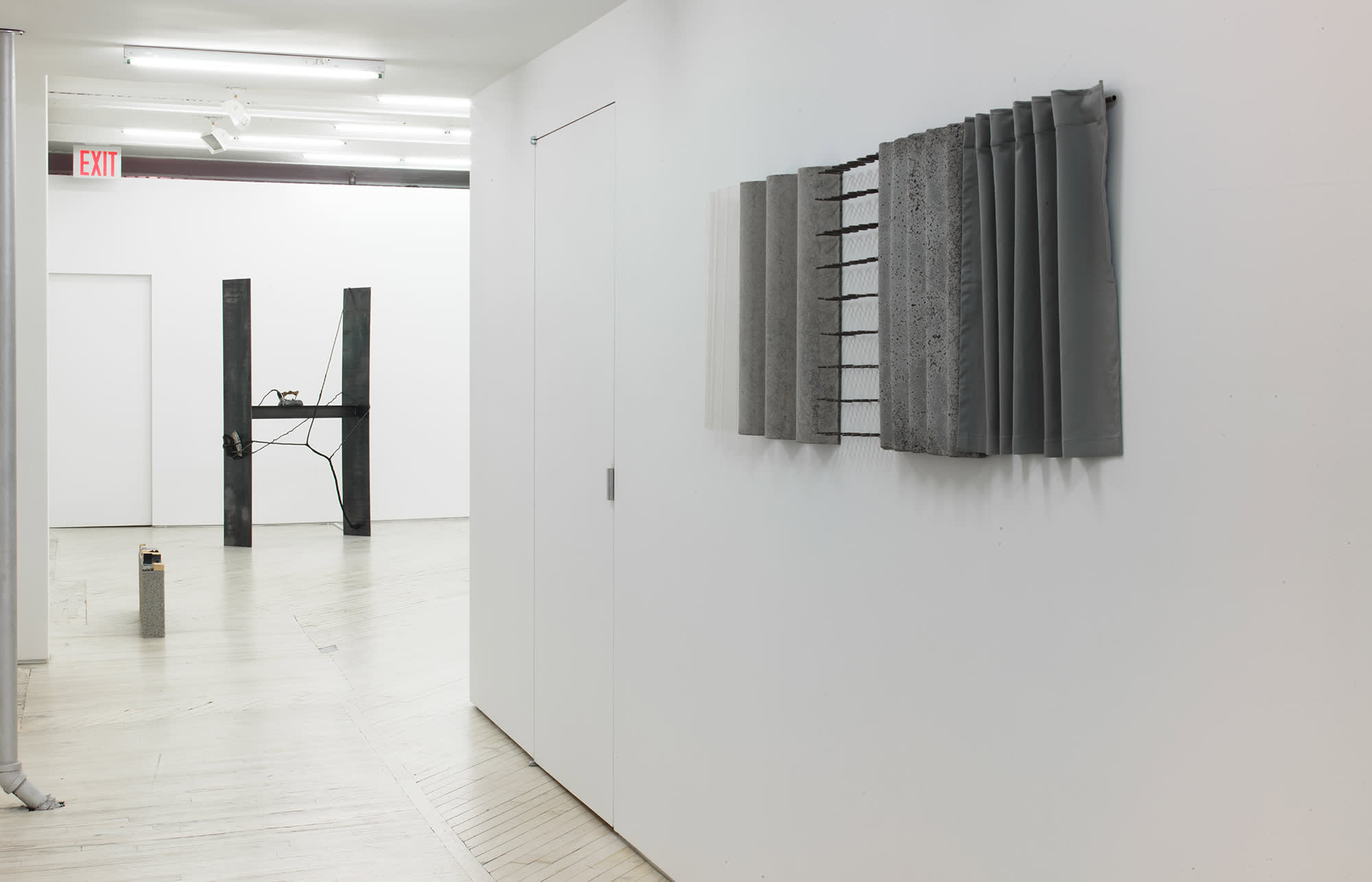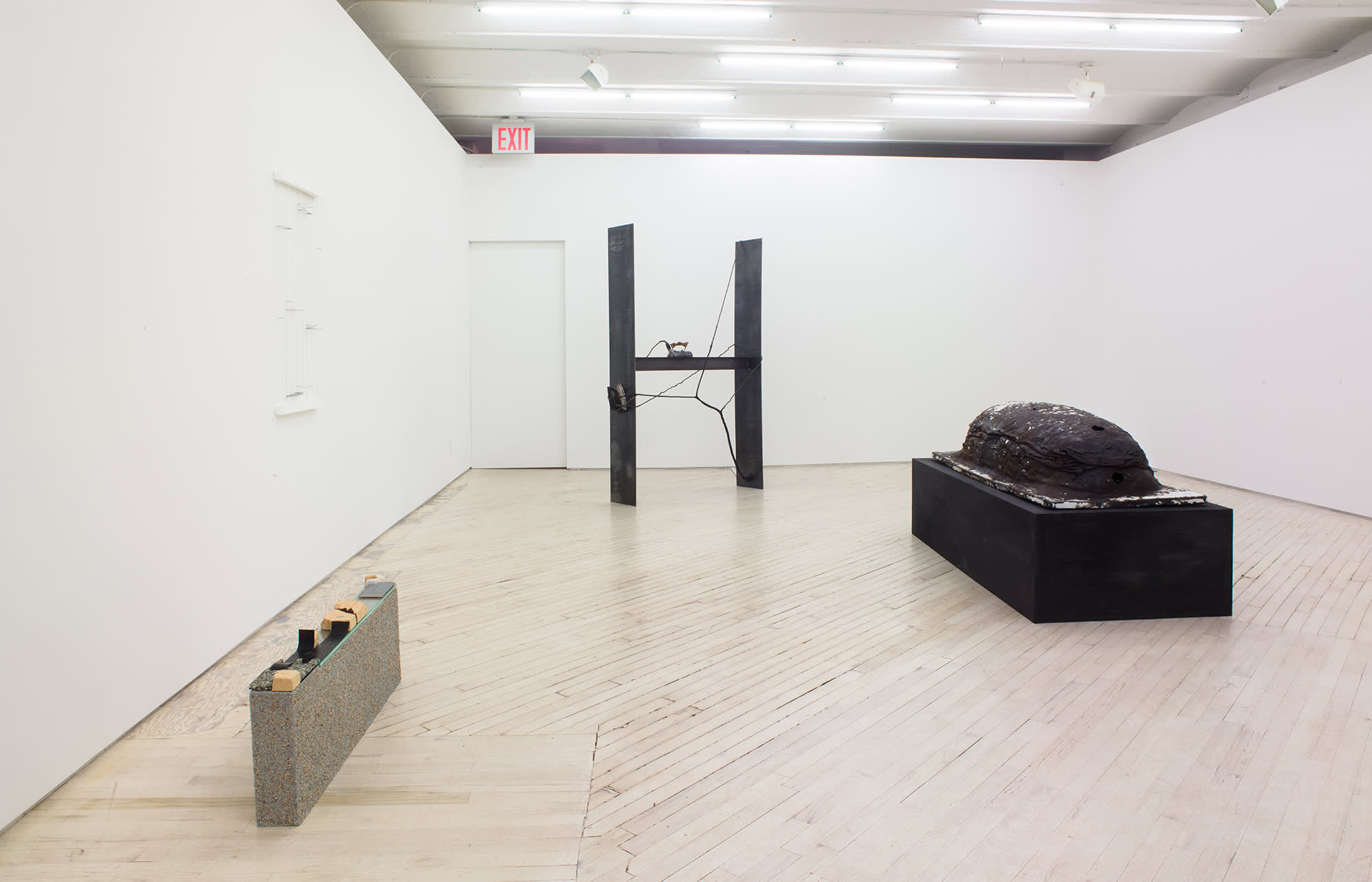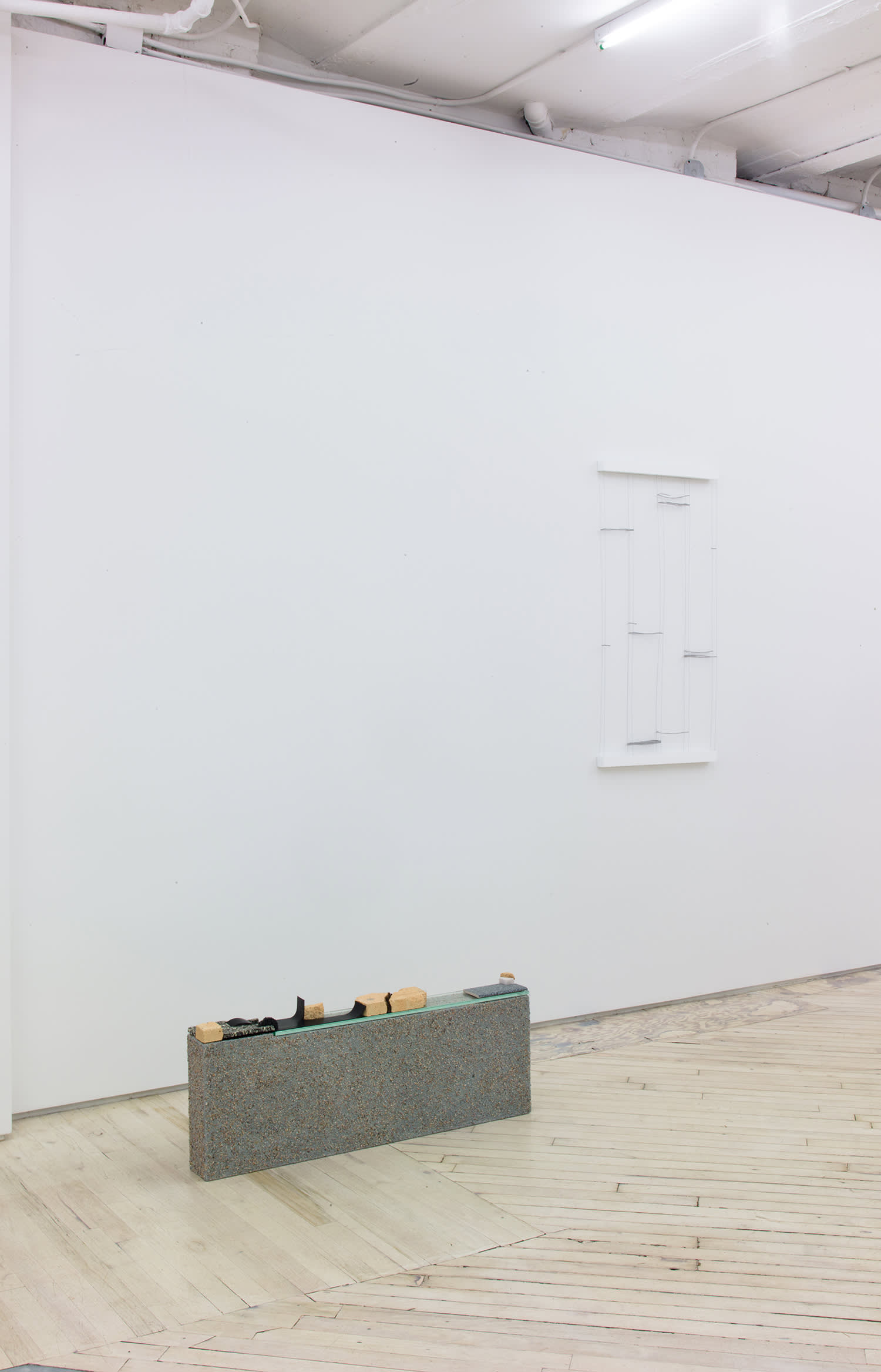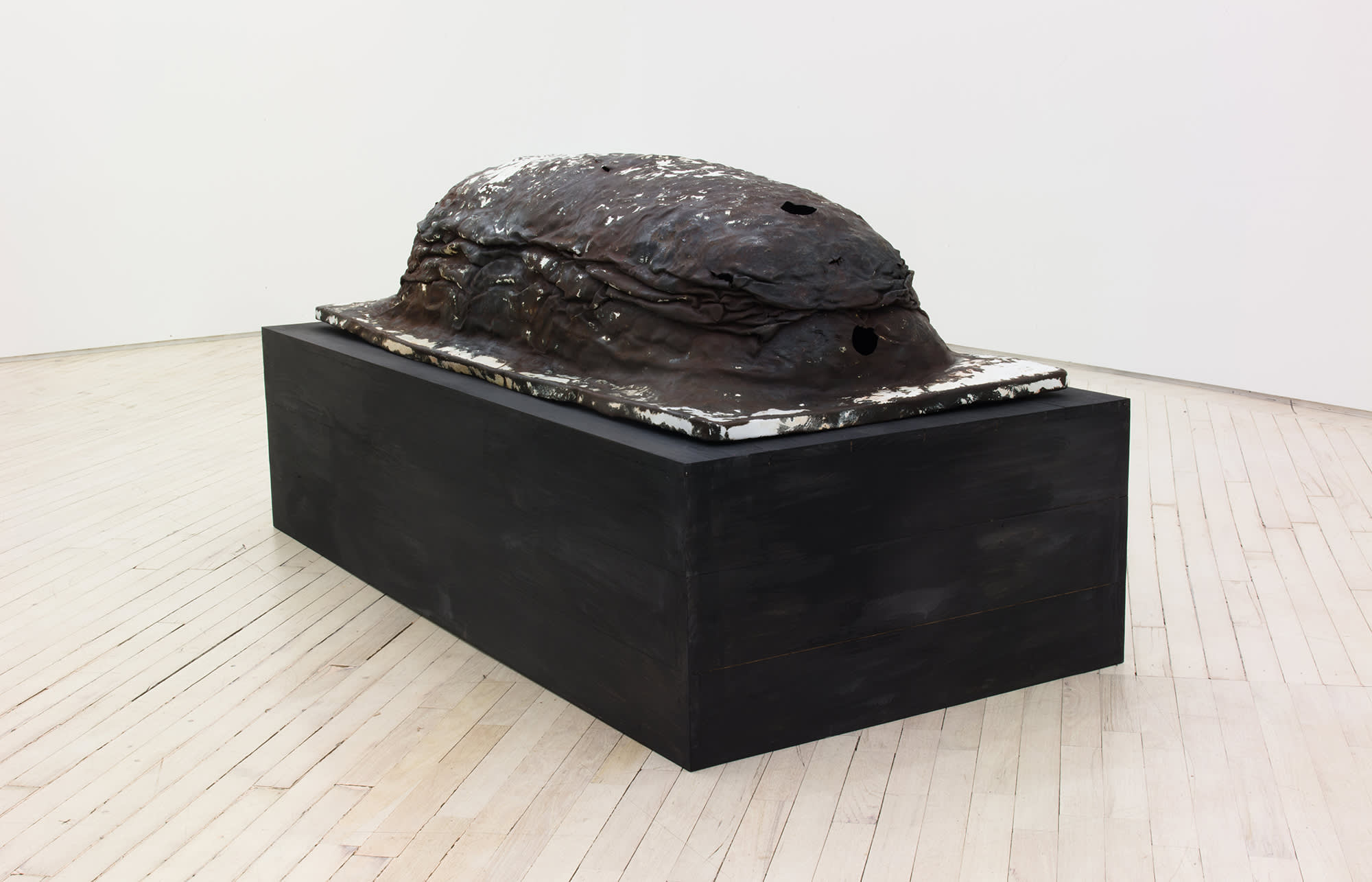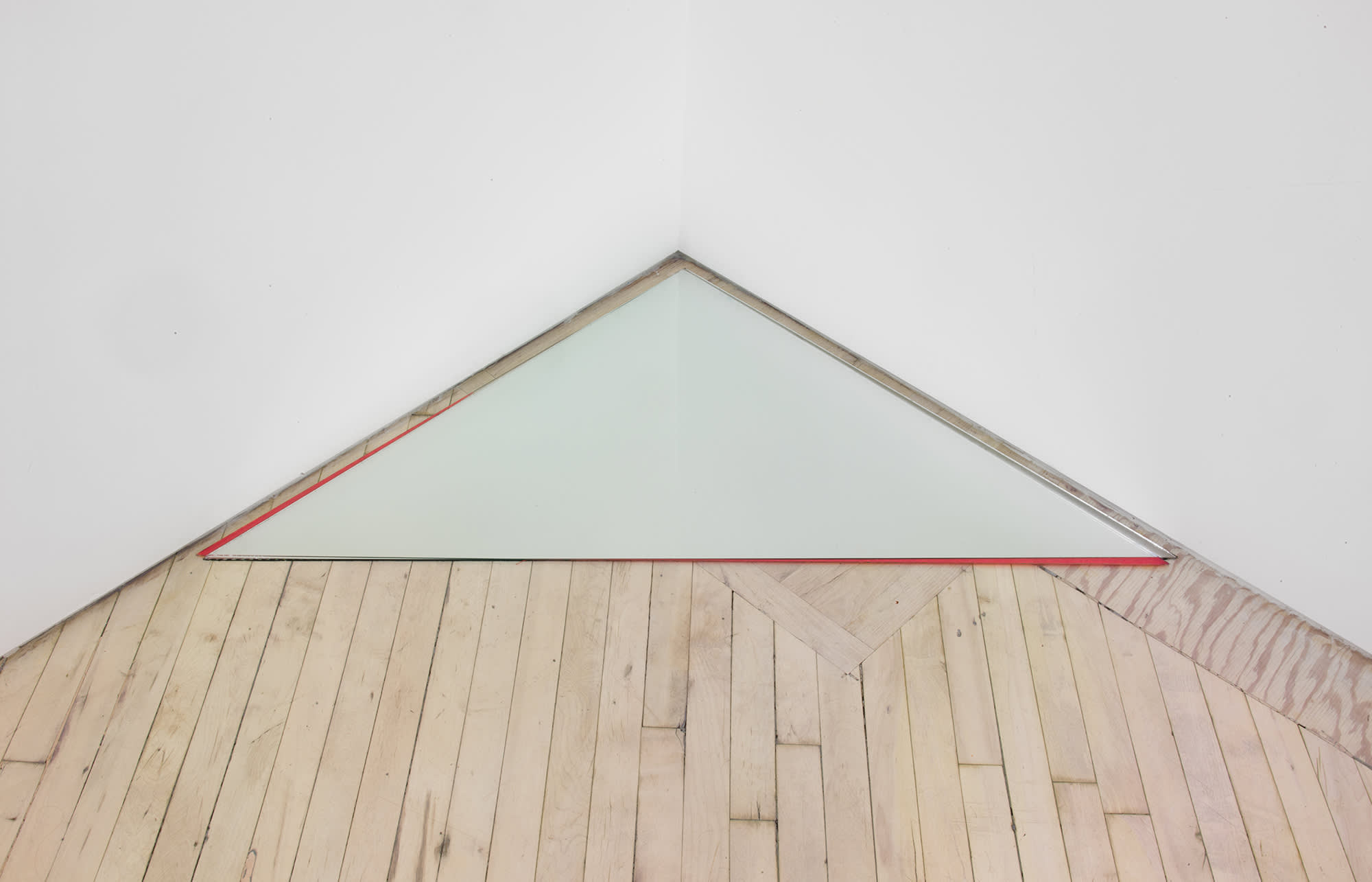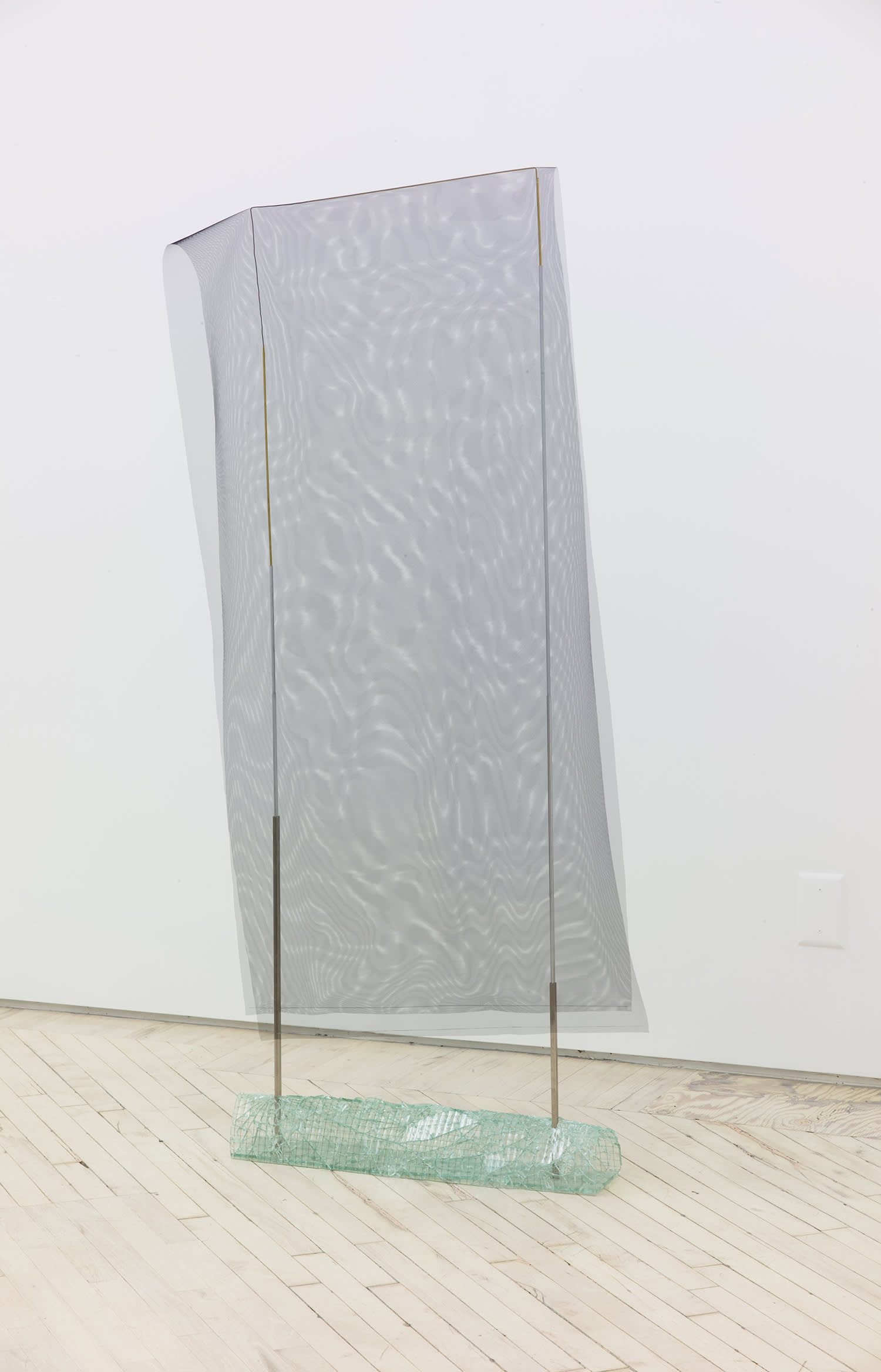Exhibition: Feet, 4 Walls & Head
Feet, 4 Walls & Head Gizela Mickiewicz & Roman Stańczak organized by Galeria Stereo, Warsaw September 12 - October 25 2015
Bureau is pleased to announce our exhibition opening the fall season: Feet, 4 Walls & Head, a collaboration with Galeria Stereo from Warsaw Poland. This two-person exhibition features Gizela Mickiewicz and Roman Stańczak, sculptors from two different generations in Warsaw, both working with everyday objects and materials. Their works converge at points of material transformation. Mickiewicz focuses on the metaphysical potential of sculpture while Stańczak’s work is exceptionally physical, bending objects to his intense spiritual will. Imagine a simple drawing of a human body and a space at one time. Feet, four walls and head. A sculpture. It would also be a representation of an inner space understood as a place of intellectual and emotional events, where walking and thinking mean basically the same – a passage from one thought to another, through the chaos. Gizela Mickiewicz and Roman Stańczak both rework these kind of inner walks and shape them into sculptural forms. These forms derive from everyday experiences and are built of common materials and objects such as glass, sand, cement, steel, mirror, an iron, a bathtub, a cupboard. While the material world is the matter, the works refer to the body and the self and space. “My sculptures speak about life, however, not among objects but among spirits”, says Stańczak. His works are usually made out of distorted objects, and his practice is based on obsessive repetition of a sculpting gesture, extended until the ordinary object absorbs the energy dedicated to it and is transformed. Mickiewicz recently realized a series of sculptural works that illustrate complex mental states. Shapes, textures and weight of matter, as well as relations between objects create messages reflecting the emotional tensions and subtleties specific to internal states. Therefore a state not easily expressed in words finds its material representation, physically embodied. Gizela Mickiewicz (b. 1984, lives and works in Warsaw) graduated from the Academy of Fine Arts in Poznań, Poland. Solo shows include: Stereo, Warsaw (2015, 2011), Frutta, Rome (2013), BWA Zielona Góra, Poland (2013). Group exhibitions include the XII Baltic Triennal at CAC, Vilnius; Bunkier Sztuki, Cracow; Kunsthalle Bratislava; and “As You Can See: Polish Art Today”, Museum of Modern Art in Warsaw. In 2014 Mickiewicz completed a residency at Gasworks, London and had a solo project at Frieze London. Roman Stańczak (b. 1969, lives and works in Warsaw) graduated at Academy of Fine Arts in Warsaw. He presented several solo exhibitions at CCA Ujazdowski Castle and Sopot PGS from 1994-97 after which he ceased his artistic practice and disappeared from the art scene. In 2013 Museum of Modern Art in Warsaw presented Stańczak’s works from the 90s within a collection exhibition and he realized a new work for Sculpture Park Bródno in Warsaw. In 2014 Stańczak presented his first solo exhibition at Stereo, Warsaw. Future projects include a solo presentation at Frieze London this fall. Gallery hours: Wednesday - Sunday 11 - 6 p.m. For more information contact office@bureau-inc.com
This exhibition has been supported in part by the Adam Mickiewicz Institute and the Polish Cultural Institute of New York.
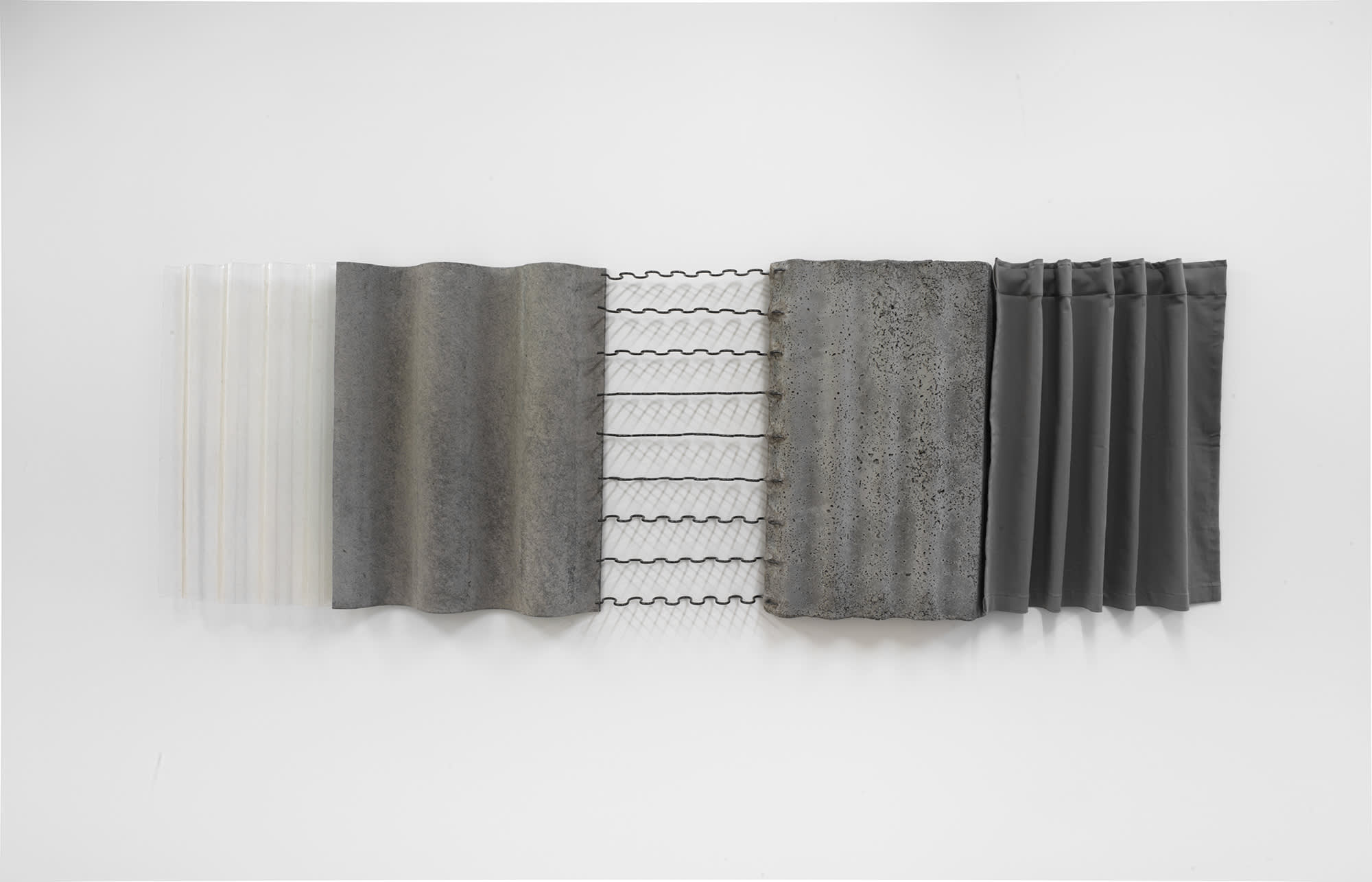
Gizela Mickiewicz, Obscuring the Rest, 2015, Concrete, corrugated spring, steel pipe, corrugated PVC, plexiglass, cotton, 23 × 72 ½ × 2 ½ in.
